Explore The Ancient Tower Making Ice in The Persian Desert
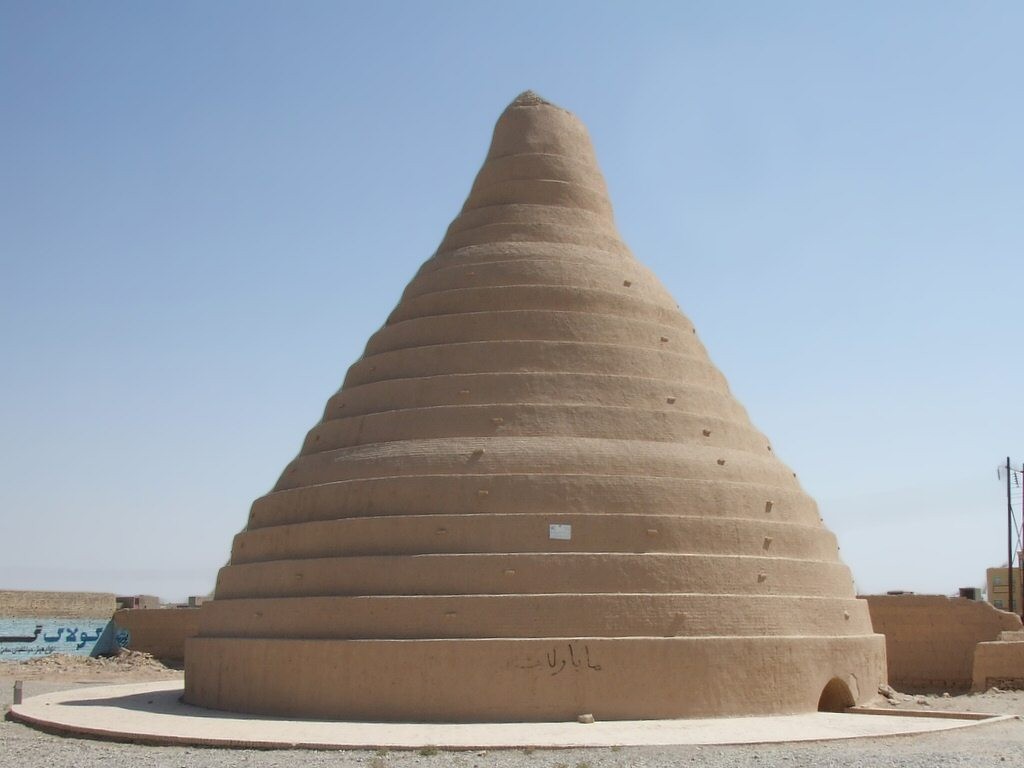 |
| Photo: Wikipedia |
The Iranian Yakhchal (meaning ice pit in Persian) is a type of ancient structure and system used to produce, harvest and store ice in winter for cooling uses later in the year. The Max Fordham R+I Group has undertaken a range of building physics analyses to investigate and infer how the Yakhchals functioned. The analysis techniques developed have potential wider uses in the design of contemporary low energy architecture.
The traditional yakhchal were built at villages on the perimeter of the large deserts on the Central Plateau. Their cone-shaped domes, up to 20 meters high, cover a large open pit for ice storage. The dome is constructed of mud and mud bricks from the excavation of the deep ice pits. An opening at the apex of the dome allows any heat or moisture to escape, and the deep pit uses the ground to moderate the temperature. The ice was either hauled in from nearby mountains or lakes, or produced in open basins at the ice house site, according Solaripedia.
Yakhchal - Ancient Type of Refrigerator
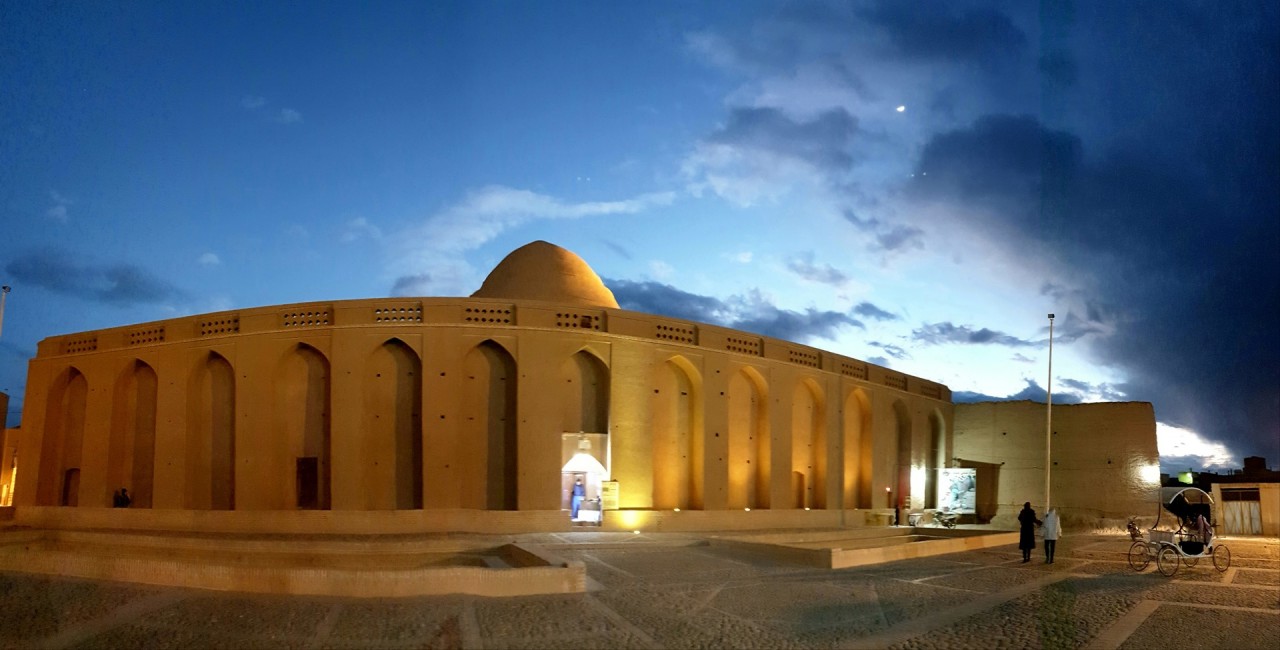 |
| Meybod Ice House. Photo: Theculturetrip |
Yakhchal is a type of evaporative cooler which cooled the air through the evaporation of water. It is made for the first time around 400 BC and is in fact a building made of a special mortar called sārooj, composed of sand, clay, egg whites, lime, goat hair, and ash which acts as an insulator. Above ground it is in a shape of a dome while it has an underground storage space which is used to keep ice or less often - food. It also has a wall that runs east-west.
In the winter ice could be brought from nearby mountains and kept in the yakhchal throughout the year but more often the qanat water (water that was led by channels from the mountains) was channeled to the north side of the wall which was in shade. That produced more ice than ice harvesting. Thick walls of yakhchal dome (sometimes as thick as 2 meters) kept ice cold throughout the year, according to The History of Refrigeration.
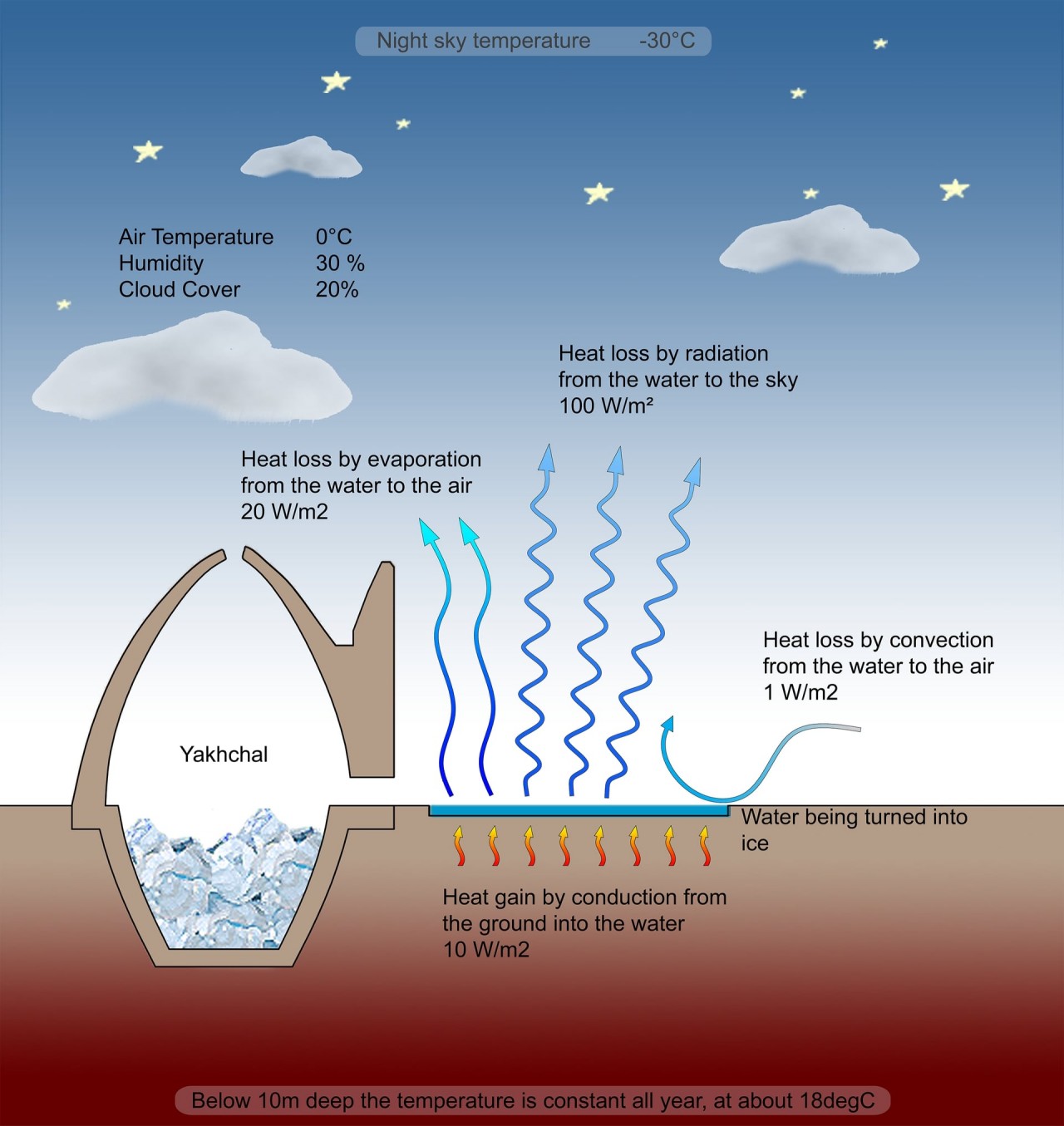 |
| Photo: Livescience |
This insulation and the continuous cooling waters that spiral down its side, and combination a system of wind catchers and wind towers, keep the ice stored there in winter - frozen throughout the summer. These buildings also have a trench at the bottom to catch molten ice and allow it to refreeze during the cold desert nights. The ice from these buildings was then used to chill food during hot summer days and to chill treats like faloodeh, the traditional Persian frozen dessert. And this ice was not only reserved for royalties.
The ancient Persians had already worked out how to passively cool buildings. Their knowledge of orientation, sun angles and their invention of different types of wind towers for different uses is well documented. The most common type of wind tower draws air out of the building so it can be replaced by air cooled by those same underground qanat. Such wind towers (called bagdir) were often positioned in fours around water cisterns. In the sense that yakhchal use the off-peak power to store energy in the form of ice, they are the forerunners of modern-day thermal energy storage systems. Since A/C was sorted, the manufactured ice was used in summer to cool drinks and make.
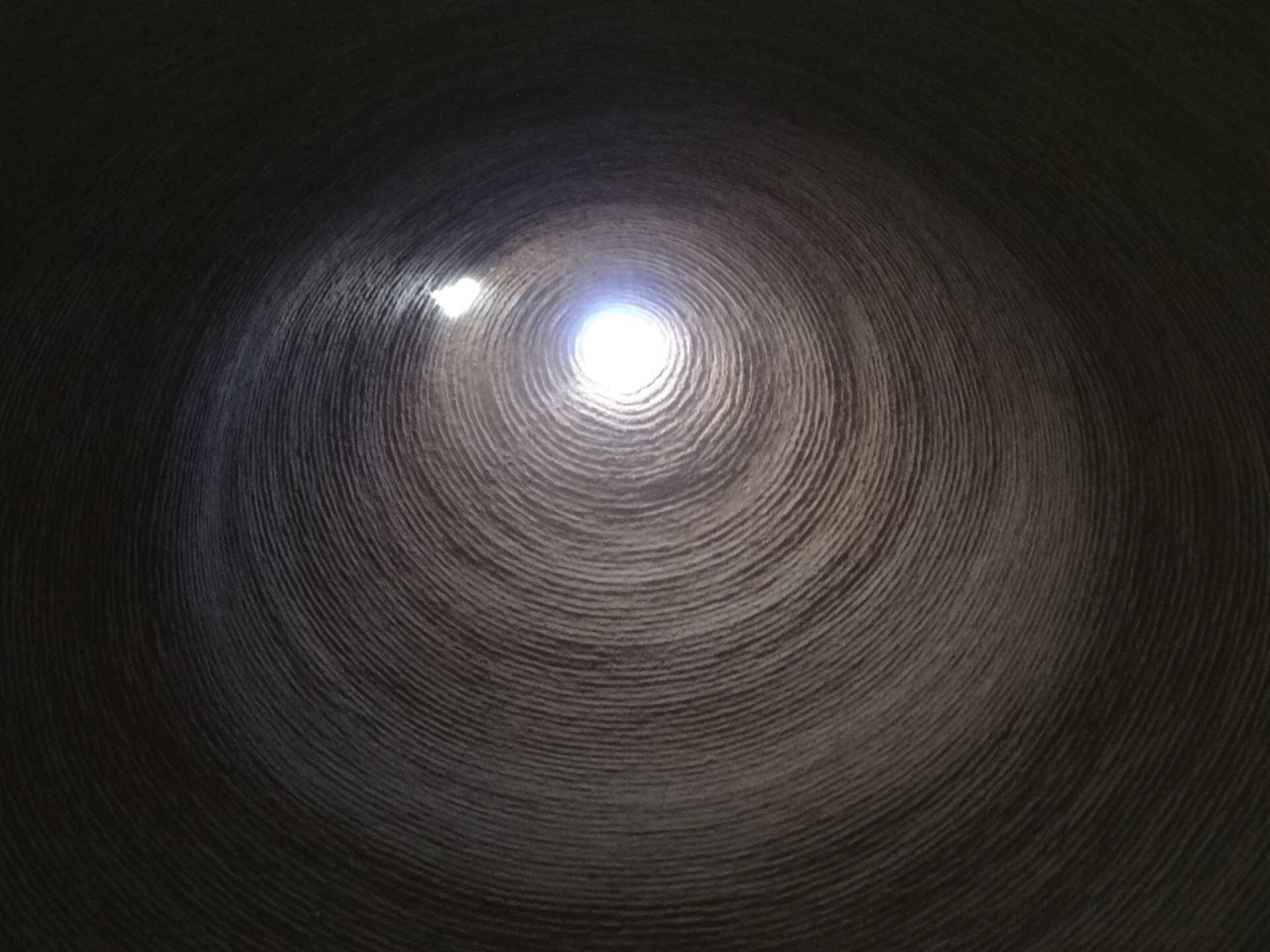 |
| Photo: The Culture Trip |
For local ice production, the qanat feeds a long, shallow channel dug on the north side of the ice house; an east-west wall shades the channel to make the ice form more quickly. During winter, water would fill the channel and freeze during the night. Before the sun rose, the ice that had formed would be broken and collected and moved to the ice house. This was repeated each night until there was enough ice to last the next summer. Then the ice was stored and packed with insulation such as straw or sawdust in the naturally cooled yakhchals. It would remain frozen for many months, often until the following winter, and could be used as a source of ice during summer months, according to Solaripedia.
The use of Yakhchal today
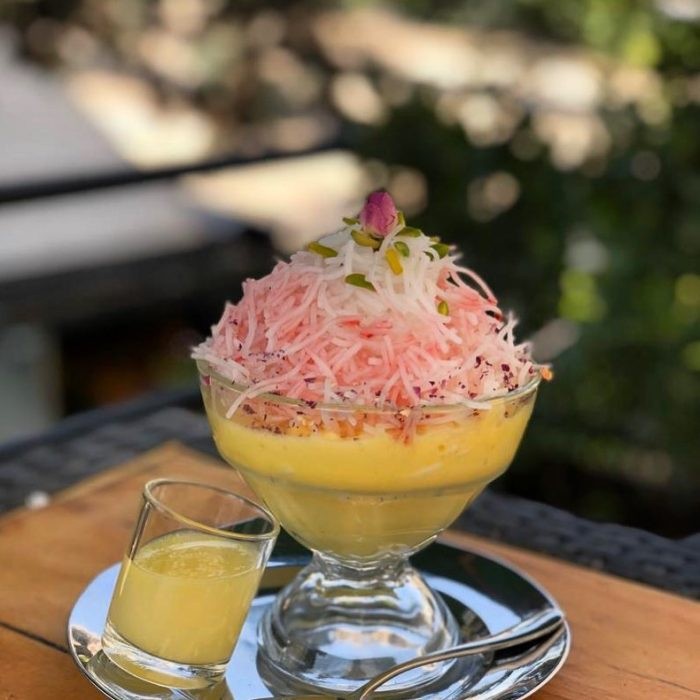 |
| Photo: Atlas Obscura |
Some of these buildings were built so well that some of them stand even today. One of the yakhchals that still stands today is in Kerman, capital city of Kerman Province, Iran. It is is about eighteen meters high. But it is one of the rare surviving yakhchals. In time they were replaced with modern electric refrigerators, freezers and air conditioners because of many different reasons. First, electric refrigerators are cheaper and more practical. Desert storms eroded a lot of yakhchal buildings especially to the ones that were in the open in the desert regions. Also, ice that was formed in yakhchals was formed in the open and was often contaminated with dust which made it a health risk. Because of all of that it slowly faded from the use and was replaced with modern home and industrial refrigerators, cited by The History of Refrigerator.
More than a hundred ice houses can be found all over Iran, but they are disappearing. Engineer Hemming Jorgensen researched and catalogued Iranian ice houses in 2010 and found, registered and mapped 129 ice house sites, including domed (111 examples), walled (6) and underground ice houses (12). They were situated at villages (104), at towns (13), and at caravansaries or forts (12). Of the total of 129 ice houses, 71 have or had an associated open-air ice-making plant, and 58 were simply storage facilities.
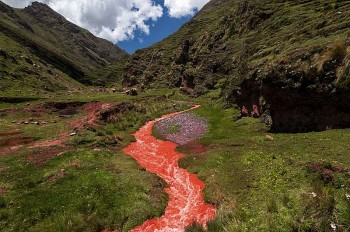 | Peru: The Mysterious And Stunning Red River Becomes A New Attraction Located on Cusco Region, Peru, Palcoyo red river has become a new attraction for first time tourists from over the world for its unique bright ... |
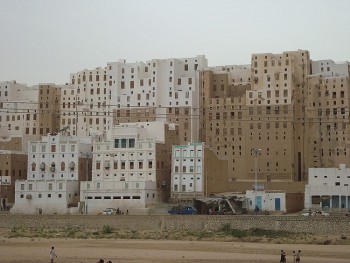 | Yemen: The Amazing Ancient 500-Year-Old Skyscrapers Made From Mud Shibam Hadramawt, a small town with 500-year-old made from mud, has been a tourist attraction in Yemen for its unique characters and structures. |
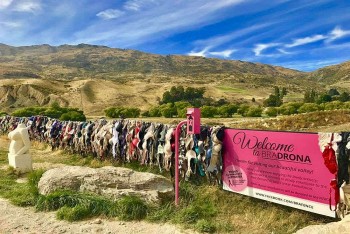 | Discover The Tale Of New Zealand’s Unique Cardrona Bra Fence Driving along the road in Cardrona, New Zealand, the visitors will be able to see the long line of the infamous bra fence, where hundreds ... |
Recommended
 World
World
Thailand Positions Itself As a Global Wellness Destination
 World
World
Indonesia Accelerates Procedures to Join OECD
 World
World
South Korea elects Lee Jae-myung president
 World
World
22nd Shangri-La Dialogue: Japan, Philippines boost defence cooperation
Popular article
 World
World
Pakistan NCRC report explores emerging child rights issues
 World
World
"India has right to defend herself against terror," says German Foreign Minister, endorses Op Sindoor
 World
World
‘We stand with India’: Japan, UAE back New Delhi over its global outreach against terror
 World
World



